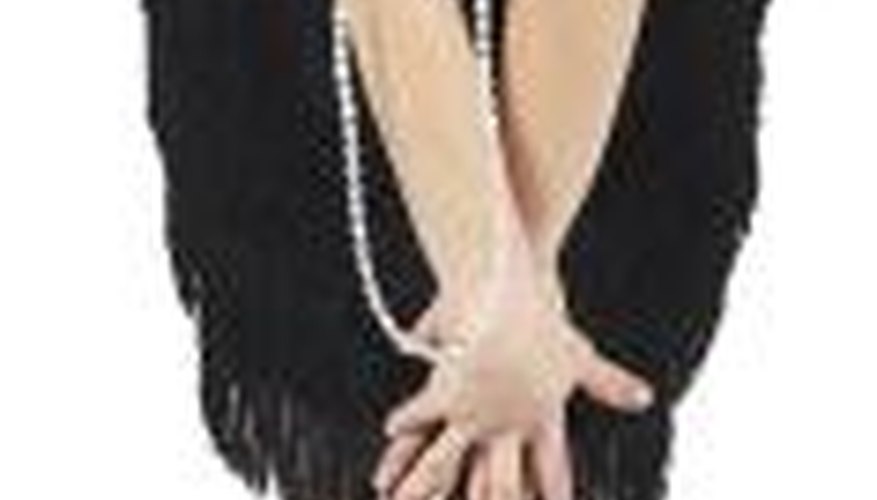The 1920s was the time when women wore a bob hairstyle and set them with curls for a more attractive and stylish look. The fashion trend for this era was the flapper look. Women wanted to look their best as they slowly began challenging society and moving out of their traditional roles. The curling tools used during that time were fingers, tongs, combs and pins. Today, celebrities are seen wearing 1920s waves to create a classy look.
Finger Waves
The bobbed haircut was one of the most popular hairstyles in the 1920s. During that era, women who wanted to soften their look and style their hair used their fingers to create waves -- thus, the finger waving technique was created. Finger waving, as the name implies, curls the hair using your fingers and a comb. The waves are close to the scalp and shaped like an "s." The hair is usually wet when finger waving is done. A setting lotion, also known as curling fluid in 1920s, is then applied to hold the waves together. Although this hair waving technique is outdated, celebrities are still seen wearing a wavy hairstyle that looks as if finger waves were used.
- The bobbed haircut was one of the most popular hairstyles in the 1920s.
- The waves are close to the scalp and shaped like an "s." The hair is usually wet when finger waving is done.
Marcel Waves
Marcel waving, created by Francois Marcel, was also one of the common hairstyling techniques used in 1920s. The hair was curled using curling tongs, which at that time was called the Marcel iron. Long before the curling iron was invented, tongs were used to create waves and curls to women's hair. The curling tongs were heated on a gas burner and tried out on a piece of paper prior to applying the heat to a woman's hair. Marcel irons actually came in various sizes depending on the woman's curling preference. Unlike finger waves, Marcel waves were usually done on dry and totally combed hair. The invention of the curling tongs brought about the development of the curling iron which is popularly used by women today.
- Marcel waving, created by Francois Marcel, was also one of the common hairstyling techniques used in 1920s.
- Long before the curling iron was invented, tongs were used to create waves and curls to women's hair.
Water Waves
In 1920, women were able to create water waves with the use of many combs with the teeth placed upward and a hair net to keep the combs in place. The combs were soaked in water and applied to wet hair. Setting lotion was also applied to the combs to hold the waves when the combs were removed. The water wave comb was manufactured for this particular purpose. In the 1920s different types of water waves were sported by women. The centre part water wave, short part water wave and straight back water wave to name a few were just some of the types of water waves from the 1920s to 1930s.
- In 1920, women were able to create water waves with the use of many combs with the teeth placed upward and a hair net to keep the combs in place.
Pin or Spit Curls
During the '20s, pins were also used to produce curls and waves to women's hair, thus the name pin curls. Such curling tools did not cause damage to the hair and made the curls last longer. In that era, women who curled their hair with pins would then use their spit to press the curls down. Pin curls were also called spit curls because of this way of styling. This curling method can be used to style wet or dry hair. Today, women wear pin curled hairstyle to give them a retro look.
- During the '20s, pins were also used to produce curls and waves to women's hair, thus the name pin curls.
